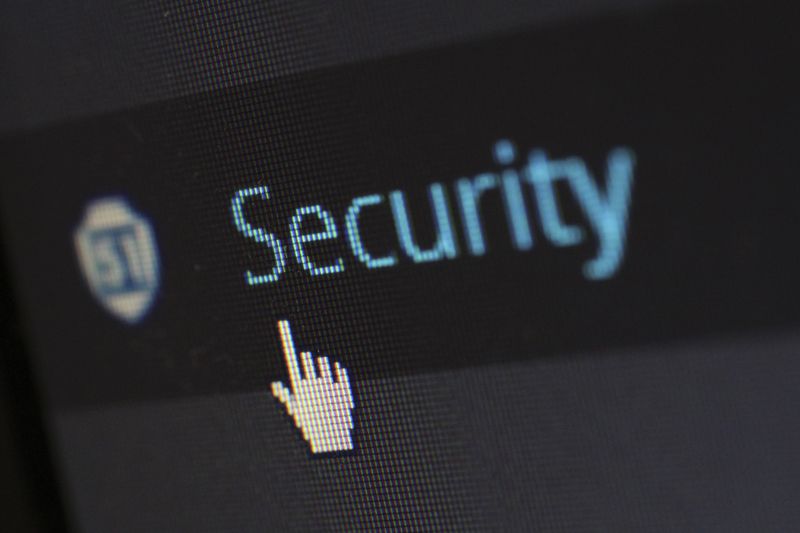Remote Work and Increased Cybersecurity Risks
The COVID-19 pandemic has forced organizations to shift to remote work, and many are planning to continue operating in this manner even after the pandemic is over. While remote work offers numerous benefits, it also introduces significant cybersecurity risks. The widespread use of remote access technologies and the growth of cloud usage have contributed to an expanded attack surface and an increased risk of credential theft.
The Threat of Credential Theft
Credential theft is one of the most prevalent methods used by cybercriminals to gain unauthorized access to business networks. Malicious actors steal usernames and passwords through various means, including social engineering, hacking, credential stuffing, and brute force attacks. Once they have obtained a business‘s corporate credentials, they can exploit the network, steal sensitive data, and cause significant harm to clients’ networks and customer information. The danger lies in the fact that these security breaches can often go undetected since threat actors can appear as legitimate users.
The Risks for Managed Service Providers
Managed service providers (MSPs) face similar cybersecurity threats, which can be easily overlooked when onboarding employees with limited experience in safeguarding login credentials. It is crucial for MSPs to prioritize these risks and provide their end-users with the necessary tools to minimize threats.
Lock Down Access with Multifactor Authentication
Cybersecurity experts recommend implementing multifactor authentication (MFA) as a layered approach to securing data and applications. MFA requires users to provide two or more different credentials, known as authentication factors, to verify their identity during login. This makes it significantly harder for unauthorized individuals to gain access to devices, networks, or databases even if one of the authentication factors has been compromised.
Types of Authentication Factors
Security professionals typically categorize authentication factors into three types:
1. Knowledge Factors:
These are secrets known only to the users, such as passwords. Knowledge factors can be vulnerable to hacking or social engineering attacks.
2. Possession Factors:
Possession factors typically involve hardware keys, security tokens, smart cards, or wireless tokens. These physical items need to be in the possession of the user to authenticate their identity.
3. Inherent Factors:
Inherent factors are associated with users’ physical characteristics, such as fingerprints, face recognition, or voice recognition.
The Importance of MFA for MSPs
MSPs must carefully consider the appropriate MFA strategy for their clients. Many experts agree that MFA is the most effective method for securing IT systems from cybercriminals. For MSPs, maintaining a strong reputation as a cybersecurity professional is essential. By prioritizing the protection of IT systems and establishing a reputation for safeguarding assets, MSPs can attract new customers, enhance relationships with existing clients, and build trust that strengthens their brand.
The Role of Time-Based One-Time Passwords (TOTP)
One popular solution for implementing MFA is the use of time-based one-time passwords (TOTP) as a second factor in addition to passwords. TOTP provides a time-limited password that users must enter during login. This interoperable solution allows MSPs to support customers using a single technological solution, improving credential security for organizations.
Limitations of TOTP
Although TOTP is widely used and cost-effective, it does have some disadvantages. TOTP codes are not fully secure against phishing attacks. Phishing sites can collect usernames, passwords, and TOTP codes, making them vulnerable to low-skilled script hackers. These attacks have become more sophisticated, automatically redirecting victims to legitimate sites in real-time, making detection more challenging.
A Better Solution: FIDO2 Authentication
FIDO2 authentication offers a more secure alternative. It consists of WebAuthn, a Web API standard by W3C, and the Client to Authenticator Protocol (CTAP). FIDO2 provides multiple user flows and can be implemented as a second factor in addition to a password or as a single factor with username discovery, with or without PIN protection. It is widely supported by popular browsers and operating systems, offering extensive protection against phishing attacks and providing flexibility based on customers’ and MSPs’ needs.
Choosing the Right Authentication Solution
Cyberattacks can have a devastating impact on MSPs’ businesses, from reputation damage to financial losses. The cost of cybersecurity recovery ranges from $15,000 to $25,000, not including restoration and legal expenses, and the decline in trust from customers and prospects is immeasurable.
MFA is an inexpensive, secure, and user-friendly solution that helps protect against credential theft. For customers looking for immediate implementation with wide application compatibility, TOTP is a viable option. However, for those willing to invest more time and prioritize protection against phishing attacks, the passwordless FIDO2 version and FIDO2 passkeys are superior choices. Customers who require two-factor authentication (2FA) and are willing to invest in hardware costs can benefit from FIDO2 hardware keys as the second factor.
Promoting Strong Cyber Hygiene
While MFA significantly improves password security, it is not foolproof. It is important to promote strong cyber hygiene and provide training to educate clients and employees about the potential dangers that exist in the digital realm. Research shows that 34% of employees admit to sharing passwords with their co-workers, highlighting the need for ongoing education and awareness regarding cybersecurity best practices.
Implementing robust multifactor authentication and maintaining a vigilant approach to cybersecurity are crucial steps for organizations and MSPs to protect their sensitive data and assets. By understanding the evolving threats and staying ahead of cybercriminals, businesses can proactively safeguard their operations in an increasingly remote and interconnected world.

<< photo by Pixabay >>
The image is for illustrative purposes only and does not depict the actual situation.
You might want to read !
- Cyberwarfare Unleashed: The International Criminal Court Under Attack
- Darknet Drug Marketplace Piilopuoti Shut Down by Law Enforcement: A Blow to the Illicit Online Trade
- Decoding the Implications: A Guide to Making Sense of the 2023 MITRE ATT&CK Evaluation Results
- Navigating the Noise: Staying Focused in a Distracted World
- Editorial Exploration: Examining the Urgent Need for Patching Amidst Nagios XI Network Monitoring Software Vulnerabilities
Output: “Urgent Patching Required: Uncovering Critical Security Flaws in Nagios XI Network Monitoring Software”
- The Evolution of the CISO Role: Embracing a Holistic Vision for the Future
- Supply Chain Insecurity: Navigating the Trust Deficit in Web Applications
- The Struggle to Safeguard Generative AI: Exploring Solutions for Data Leakage
- Malicious Malware: Unraveling Transparent Tribe’s Deceptive YouTube Tactics
- Streamlining Authentication: The Evolving Landscape of Convenient and Secure Access
- The Power of Cloud Services for Enhanced Login Security
- “PyPI Takes Measures to Enhance Security with Mandatory Two-Factor Authentication for Project Owners”
- The Downfall of PIILOPUOTI: Finnish Authorities Crack Down on Dark Web Drug Trade
- The Cybersecurity and Infrastructure Security Agency (CISA) is providing water utilities with a free vulnerability scanning service to enhance their security measures.
- The Anatomy of API Breaches: Strategies for Stronger Security Measures
- Counteracting the Resurgence: 3 Defenses Against Infostealer Attacks
- The Future of Data Protection: Alcion Secures $21 Million to Revolutionize Backup-as-a-Service
- Editorial Exploration: Exploring Strategies for Data Protection in the Era of Language Models
Title: Safeguarding Data in the Age of LLMs: Strategies and Solutions Explored
- TikTok’s €345 Million Fine: A Wake-Up Call for Child Data Protection?




